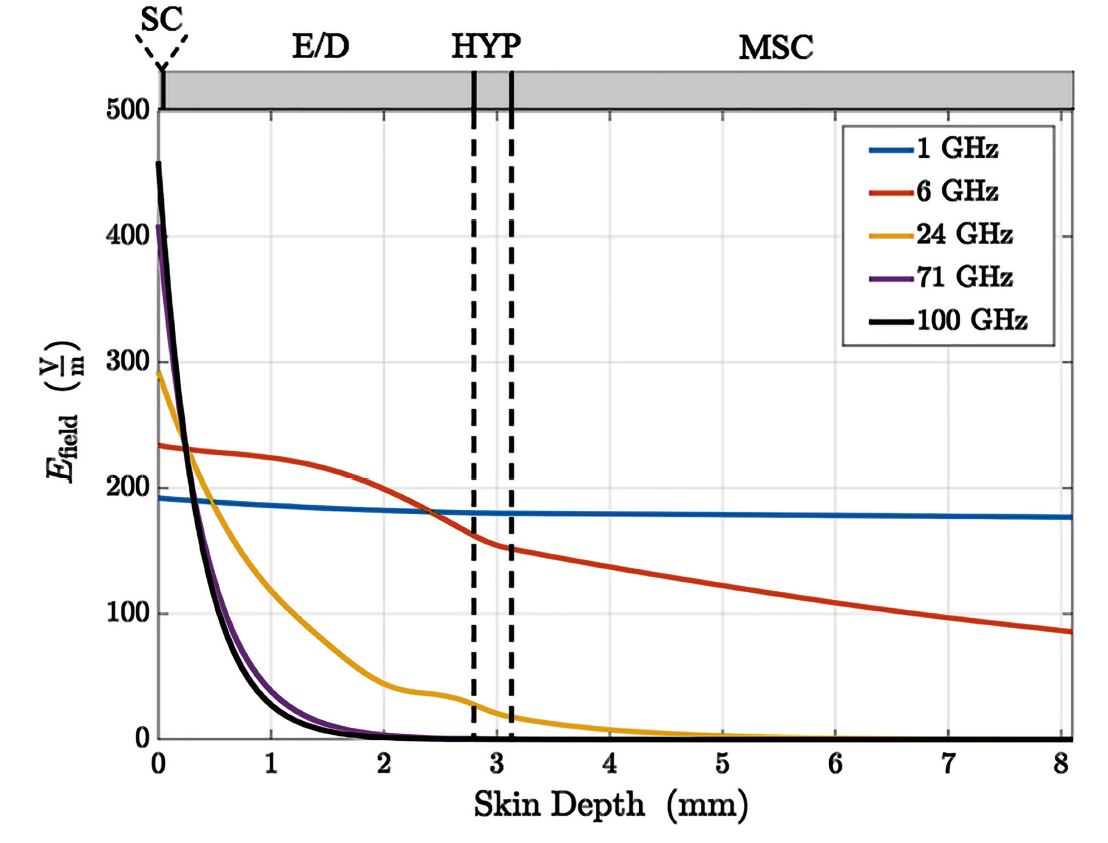The detailed analysis of the reflection, transmission behavior, and dosimetric properties of radio waves interacting with skin layers, as presented in the FSM Research Project “MicroBioEM” final report, elucidates several critical findings pertinent to the investigation of electromagnetic (EM) wave effects on human skin:

- Reflection and Transmission Behavior:
- It was identified that the cell types and their geometries within the skin significantly influence the reflection and transmission of EM waves. The hierarchical computational model developed integrates both macroscopic and microscopic considerations of the epidermis, including the cellular level, which contrasts previous models that treated the epidermis as homogenized. This approach acknowledges physiological variations within the skin layer, emphasizing the importance of cell geometry and structure along with histochemical composition changes across the skin layers.
- Penetration Depths:
- The study confirms a reduction in penetration depths with increasing frequency, highlighting the frequency-dependent behavior of EM wave interaction with biological tissues. This phenomenon underscores the need for detailed modeling to accurately predict EM exposure effects, particularly at higher frequencies.
- Skin Region Variability:
- Variations in penetration depths also depend on the specific skin region, indicating that different areas of the body may exhibit unique responses to EM wave exposure. This variability necessitates a comprehensive approach to safety assessments, considering the heterogeneous nature of human anatomy.
- Gender-specific Differences:
- Notably, the research identified gender-specific differences in the interaction between EM waves and skin, which are particularly pronounced in the 3 to 25 GHz range. This finding suggests that male and female skin may absorb and reflect EM energy differently, potentially influencing safety limits and exposure guidelines in a gender-specific manner.
- Dosimetric Analysis:
- The report provides a thorough dosimetric analysis, comparing a reference skin model based on measured properties to a hybrid model that incorporates the numerical tissue model of the epidermis with measured models of other skin layers. This comparison revealed significant biases in the reference model, particularly at frequencies above 100 GHz, and highlighted the importance of considering the imaginary part of the permittivity and the distribution of power across skin sublayers for accurate dosimetric assessments.
- Implications for Safety Standards:
- The findings have significant implications for the development of safety standards and guidelines, particularly concerning the accurate representation of physiological variations within the epidermis. The study’s results demonstrate the necessity of incorporating detailed, physiologically accurate models into safety assessments to ensure protection against potential adverse effects of EM exposure.
In conclusion, this comprehensive investigation into the interaction of EM waves with human skin emphasizes the critical need for detailed, physiologically accurate modeling in assessing safety and establishing exposure guidelines. The identification of frequency-dependent penetration depths, regional skin variability, and gender-specific differences underlines the complex nature of EM wave interaction with biological tissues, necessitating nuanced approaches to public health protection in the context of increasing EM exposure from wireless technologies.







